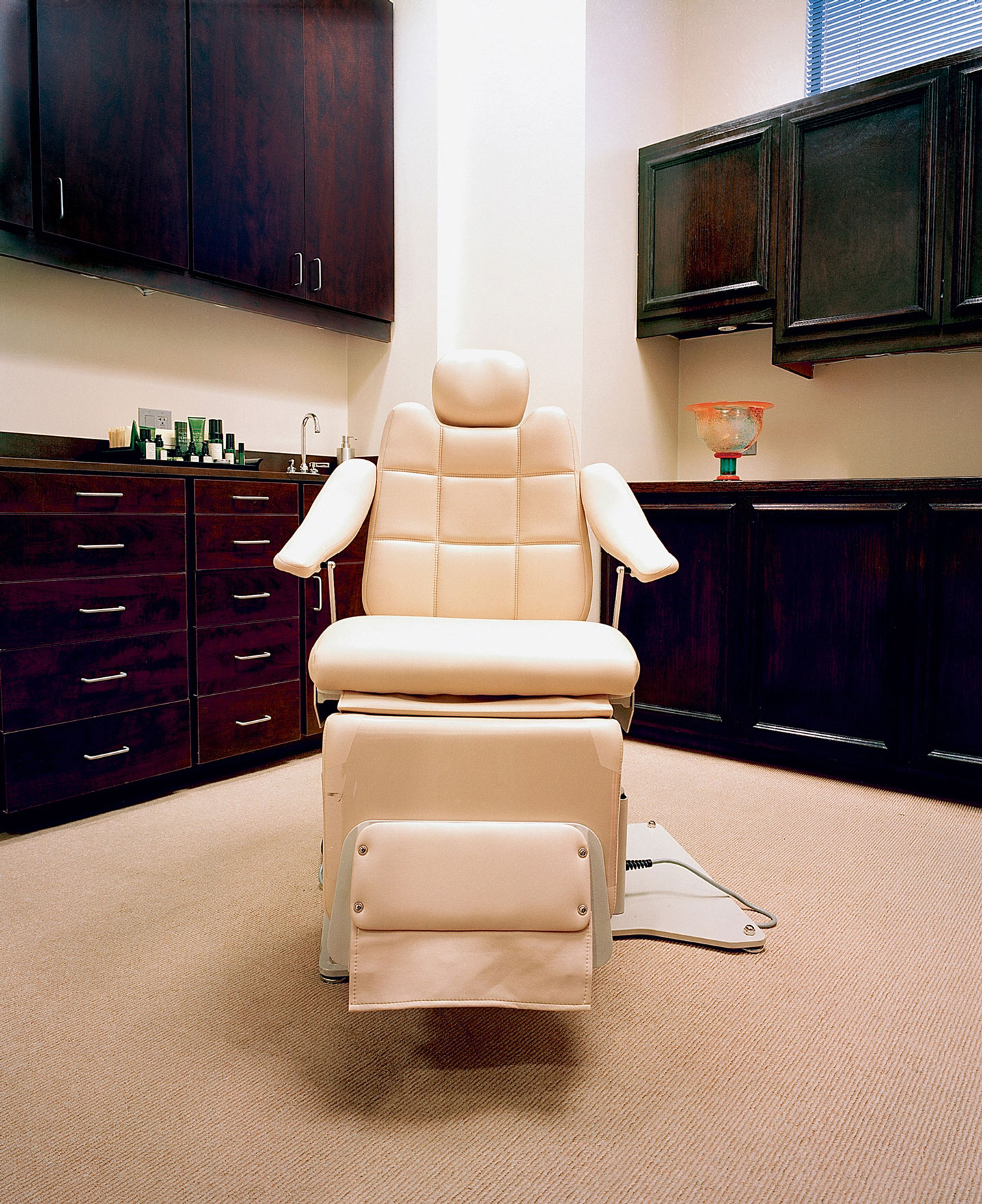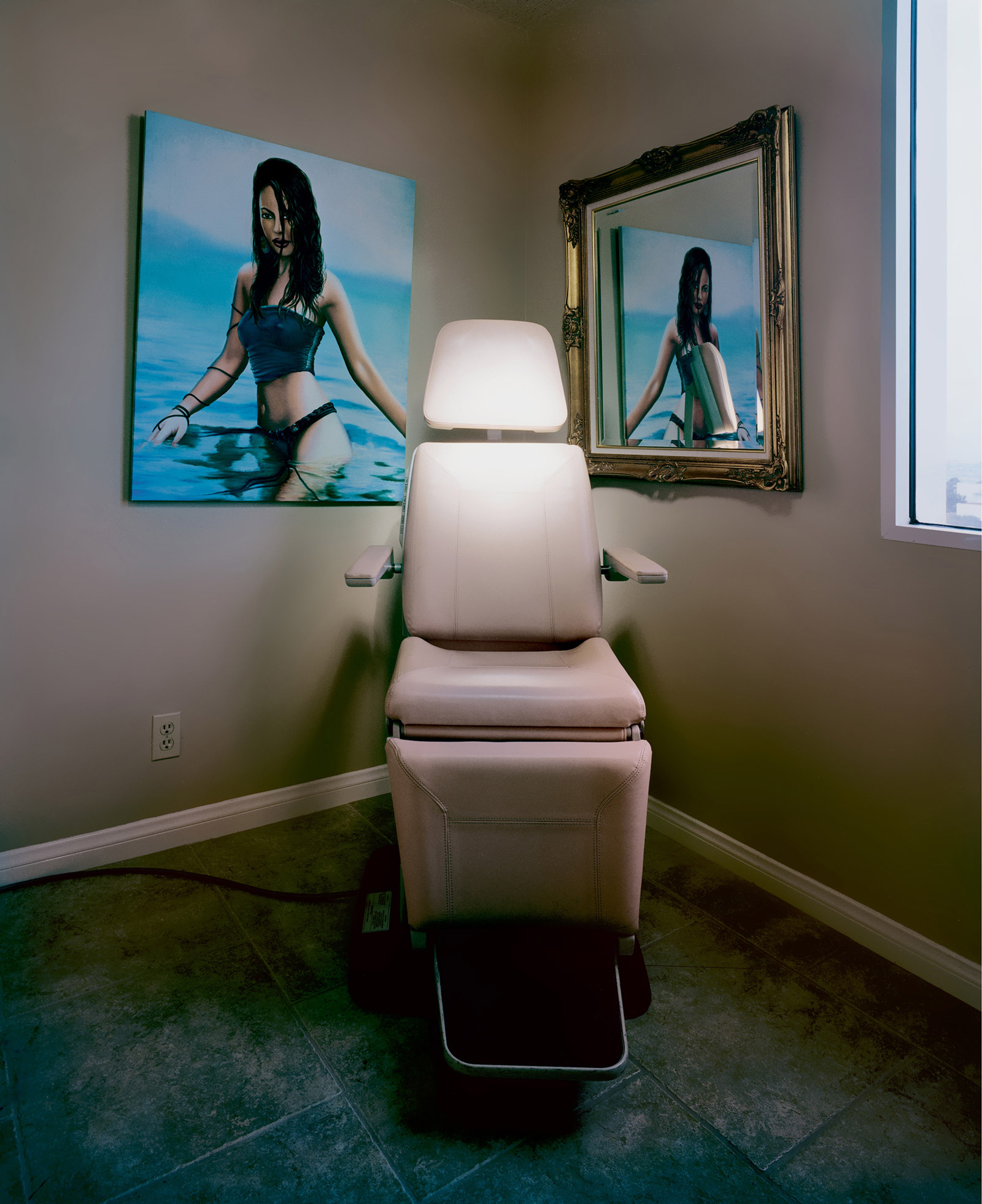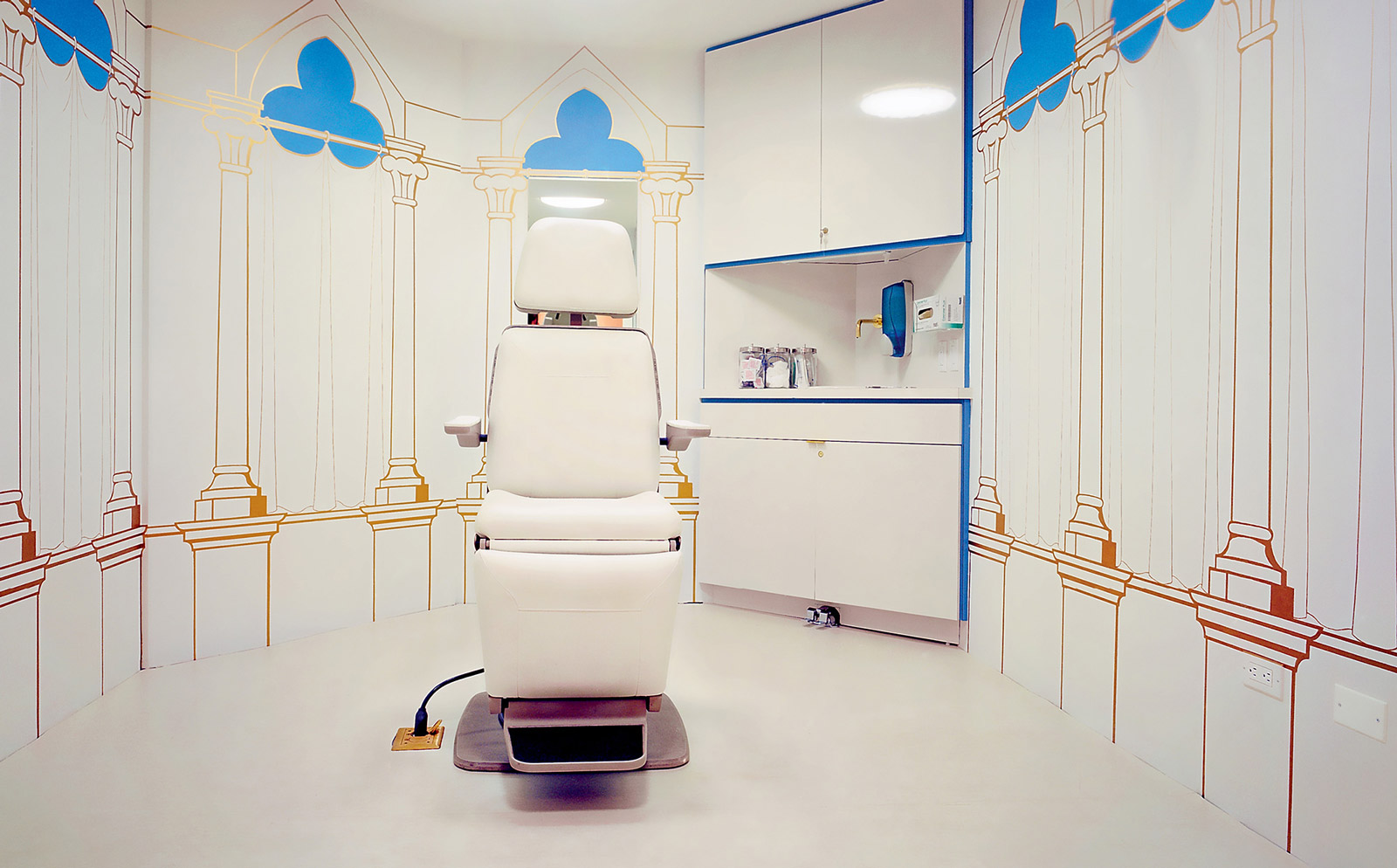Artist Project / Singular Beauty
Reconstruction sites
Cara Phillips
I am a naturally small girl, with a very nice, curvy figure (I’m about a size 2 with naturally nice D-cup breasts). However, I have a little fat in my neck and a little in my tummy. I work out, and would like to get that little fat removed. I’m small, so it would look natural.
—Posting from the online plastic surgery forum, beautysurg.com.
In 1907, Charles Miller wrote the first medical text on “beauty surgery.” The book provided instructions to combat the signs of aging, including a procedure to prevent expression lines by severing specific facial nerves. The pioneering volume was largely dismissed by the mainstream medical community, which at the time believed that plastic surgery should only be used to correct injuries or deformities. But a review of it appearing in the 1908 issue of the California State Journal of Medicine contained a prediction for the future of cosmetic surgery: “This small volume deals with an aspect of surgery remote from the interest of surgeons, but sooner or later featural surgery is destined to take its place as a recognized specialty.” Charles Miller’s one time “quackery” has evolved into a fifteen-billion-dollar-a-year business in the United States. America’s beauty culture is a complex and pervasive phenomenon. Its scope and power can be found in the many cyberspace forums devoted to the subject. On these anonymous message boards, patients share their results, questions, and feelings. The easy access to information has triggered the rapid growth of the industry. In 2006, nearly twelve million Americans had a cosmetic procedure.
When Miller wrote his medical guidebook, modern technology was just beginning to enable us to correct or enhance our bodies. Today, there is a never-ending array of tools and machines to make us beautiful. Patients look in the offices of cosmetic surgeons for the promise of happiness. Instead, they often discover their own fears, self-loathing, and anxieties. In his essay on the purpose and nature of art, Ralph Waldo Emerson wrote: “The best of beauty is a finer charm than skill in surfaces, in outlines, or rules of art can ever teach, namely, a radiation from the work of art of human character.” The American Society of Plastic Surgeons’ website disagrees: “Even a small change on the outside can create an extraordinary change on the inside, allowing an individual’s self-confidence to flourish.”
The images on the following pages are taken from a larger body of my work that coincides with a long and personal struggle with body and self-esteem issues. In photographing these doctor’s offices, I have been able to conquer many of my inner demons and, in the words of Susan Sontag, make “familiar things small, abstract, strange and much farther away.”



Cara Phillips is a Brooklyn-based photographer. She is also the co-founder and co-curator of the online exhibition project “Women in Photography.” Her work can be seen in New York this fall in New York in a group show curated by the Humble Arts Foundation and in “Art in Odd Places.” See www.cara-phillips.com for more information.